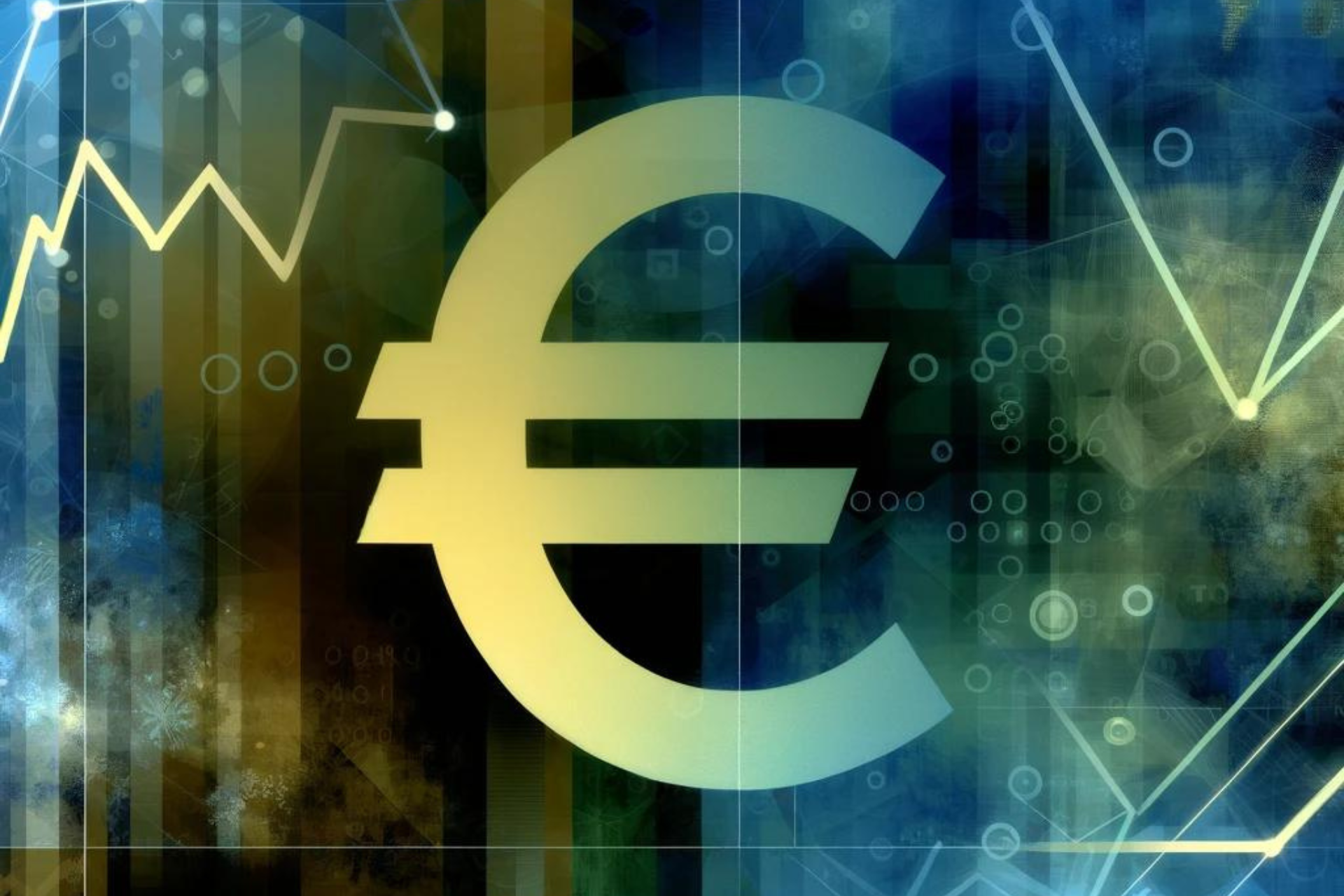How much consumer prices change over time is a key economic indicator, and affects everything from the cost of living to monetary policy, investment decisions, and wage negotiations.
This data tracker focuses on inflation data from the harmonised index of consumer prices (HICP), which is compiled by Eurostat and the national statistical institutes. Speficially, it covers the all European Union countries as well as Iceland, Norway, and Switzerland. The HICP is calculated using harmonised statistical methods, and thus ensures comparability across countries.
The tracker is divided into three parts, first it covers the latest data published by Eurostat, currently March 2024. Second, it explores inflations trends over time, and third, looks more closely at how the main compoents of the HICP are developing (food, energy, services, goods). Throughout, the focus in on annual change, defined as the change of the price level of consumer goods and services between the current month and the same month of the previous year.
Euro Area Inflation at 2.4% in April
The inflation rate in the euro area was 2.4% in April 2024, as per the latest Eurostat flash estimate. This is the annual rate of change, and thus indicates how much prices have changed compared to April 2023.
A rate of 2.4% indicates a stable rate compared to the 2.4% observed in March 2024. As the chart below illustrates, inflation in the euro area has decreased significantly over the past year, after peaking at above 10% in October 2022.
For the 27 EU countries (EU27), the latest inflation rate for March 2024 was 2.6%, down from 2.8% in February. The EU27-average thus follows the same declining trend as euro area countries, although at a slightly higher level. Note that inflation data for all EU27 countries for April 2024 will be published on 17 May 2024.
Note that Eurostat only produce flash estimates for euro area countries at the end of each month. The full data release for EU27 countries is published around the middle of the following month. For example, the inflation flash estimate for euro area countries in February 2024 was published on 1 March 2024, while the full data release including all EU27 countries is 18 March 2024.
The euro area consists of those EU Member States that have adopted the euro as their currency: Belgium, Germany, Estonia, Ireland, Greece, Spain, France, Croatia, Italy, Cyprus, Latvia, Lithuania, Luxembourg, Malta, the Netherlands, Austria, Portugal, Slovenia, Slovakia and Finland.
For these countries, it is the European Central Bank (ECB) that defines the monetary policy. The ECBs main objective is to maintain price stability, and its primary tool to doing to is through its set of interest rates at which commercial banks can borrow from or deposit with the ECB. Every six weeks the ECB takes monetary policy decisions aimed at steering inflation towards a 2% target rate.
In their latest Monetary Policy decisions on 7 March 2024, the ECB decided to keep interest rates unchanged, based on their overall assessment that their past interest rate hikes are helping to push inflation down.
Inflation Trends Over Time
The chart below shows how the inflation rate has developed over the past five years in all EU countries as well as Iceland, Norway and Switerland. These are harmonised indices of consumer prices (HICP), which means the measure is comparable across countries.
We can see the inflation rate went up a lot for some countries during the last few years compared to where is stood in 2019 and early 2020. In many countries, the average annual rate stood at 10% or higher during the peak in the autumn of 2022. Estonia, Hungary, Latvia and Lithuania even experienced rates at above 20%.
Countries such as France, Iceland, Malta, Norway and Switerland have seen their rates develop at a relativly slower pace when compared to the EU27-average (shown as a grey line in the charts below). In Switerland, the peak inflation rate was 3.3%.
The table below takes a closer look at the inflation rates over the past 12 months. Overall, during 2023 and into the start of 2024, all countries covered have seen a significant decline in inflation rates. As per March 2024, the latest month for which all countries have reported data, inflation is highest in Romania and lowest in Lithuania.
Note that Eurostats flash estimates for euro area countries will be visible in the table when they are available.
Inflation by main components
Inflation can be understood both as an overall rate and by examining its main components. If we examine the EU27 area as a whole, there are four main components that contribute to the overall index: services, food, energy and non-energy industrial goods.
Services hold the most significant weight, making up approximately 42.3% of household final monetary consumption expenditure. This is a substantial share, reflecting the diverse range of services that consumers use daily. Non-energy industrial goods, which include items like clothing, appliances, and cars, represent around 26.3% of the expenditure. Food, alcohol, and tobacco combined have a weight of 21.1%, while energy constitutes 10.2%.
If we examine the latest data for the EU27-countries, food, alcohol, and tobacco prices increased by 2.3% annually in March, down from 3.7% in February, indicating a deceleration in price growth for these essential goods. Service prices were unchanged from the previous month at 4.4%. Non-energy industrial goods inflation slowed to 1.6% down from 2.0% in February. Energy prices, while still negative, showed signs of normalizing, posting a -1.6% rate compared to -3.3% in February.
As noted above, one of the key features of the HICP is its harmonization. All countries include the same categories in their baskets and adhere to uniform calculation methods. This ensures comparability across countries while accommodating differences in consumption patterns. Differences in consumption patterns are influenced by a range of factors including climate, product taxes, lifestyles, cultural traditions, and the availability of products.
One example highlighted by the ECB is how olive oil and butter are bought differently across Europe. In the South, people buy more olive oil, while in the North, butter is more popular. The HICP takes this into account by adjusting the weight each product has in the inflation basket, based on how much households spend on them in each country. As such, how the components are weighted for each country is based on actual consumptions by households, with weights updated annually for each country.
With this background lets take a closer look at each of the four main components by country.
Food Inflation
The table below shows how food inflation has developed over the past year in all EU countries as well as Iceland, Norway and Switerland. In 2023, transitioning into early 2024, there has been a notable decline in food inflation rates across the countries surveyed. This trend mirrors the general inflation trends, with a significant reduction from previously elevated levels.
As per March 2024, the latest month for which all countries have reported data, Iceland recorded the highest food inflation rate, followed by Norway and Croatia, while Czechia experienced the lowest.
Services Inflation
Similar to food items, throughout 2023 and into the early months of 2024, there has been a reduction in services inflation across countries. As of March 2024, Hungary registered the highest services inflation rate, followed by Romania and Croatia, while Switzerland had the lowest services inflation rate.
Energy Inflation
Energy inflation has much more volatility than the other main components, reflecting the energy sector’s sensitivity to geopolitical events, supply-demand imbalances, and shifts in oil and gas markets. As the table shows, over the past year many countries have experienced rapid fluctuations in energy prices. As of early 2024, energy inflation was negative in the majority of countries.
Industrial Goods Inflation
During the last 12 months, there is a clear trend towards normalization of inflation rates for non-energy goods. By early 2024, inflation rates for these goods have moderated across many countries. One outlier is Romania, where it stood at above 11% in March 2024. All other countries are seeing rates of lower than 4%, with a few countries such as Ireland, Switzerland and Denmark even seeing negative rates (prices are lower than compared to same month in the previous year).
About the data
The data used on this page is from Eurostat.
Changelog
- Initial release March 2024.

